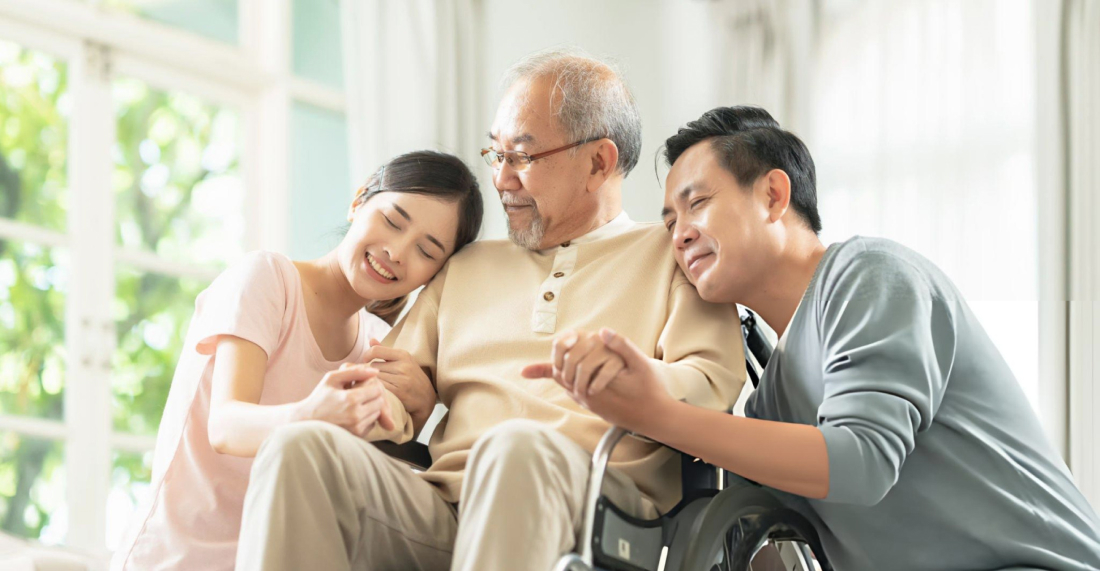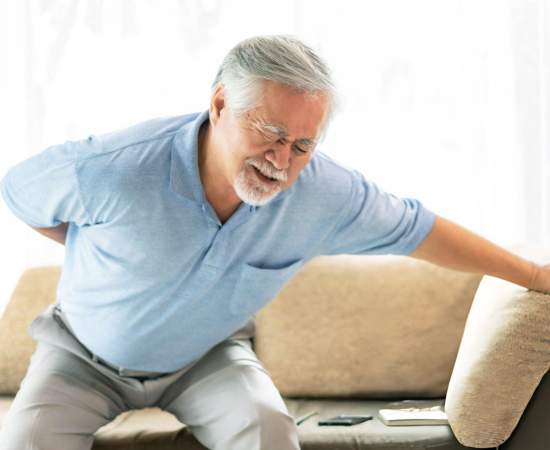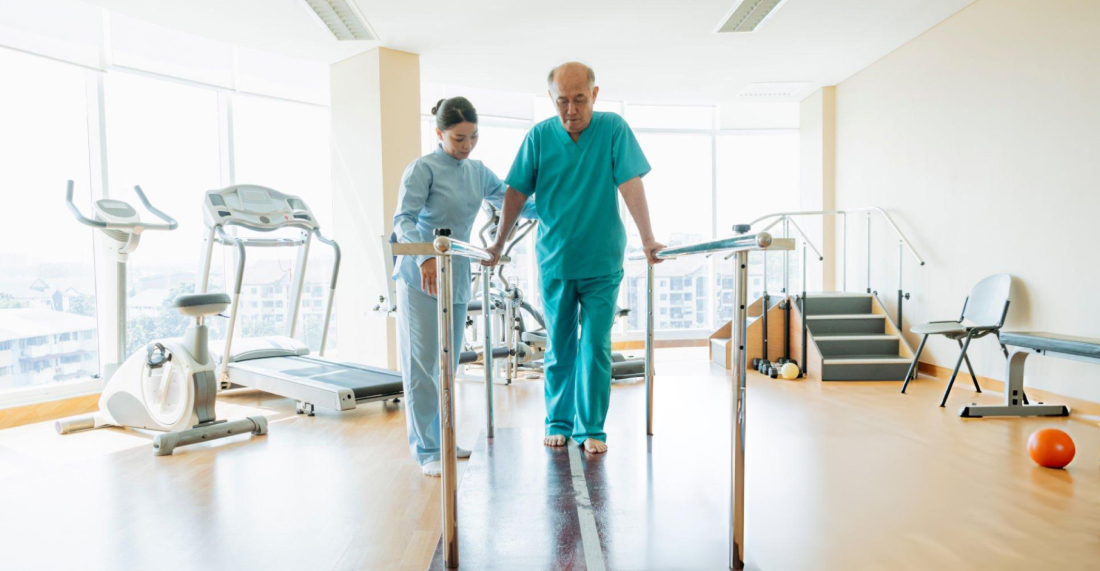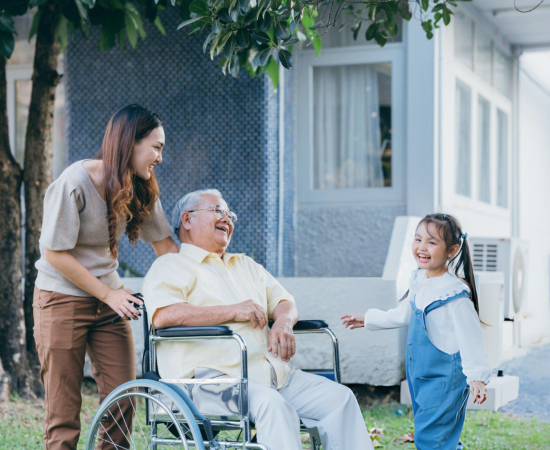

As people age, maintaining independence and mobility can become challenging. Mobility issues among the elderly are not only physically limiting but can also lead to emotional distress and a reduction in the quality of life. Whether it is due to age-related wear and tear or sudden incidents such as strokes or fractures, these issues often demand understanding, patience, and intervention from caregivers.
Let’s understand more in this article.
For many elderly individuals, mobility is closely linked to their sense of self-worth and independence. As people age, they may become more dependent on others for daily tasks, but fostering independence is key to maintaining mental and physical health. Ensuring that seniors maintain as much autonomy as possible not only boosts their confidence but also enhances their overall well-being. A structured caregiving approach that supports the elderly while helping them remain as independent as possible is essential in preventing the decline of mobility.
Recent studies reveal that percentage of elderly with mobility issues ranged between 35% to 50%. This percentage increases with age, particularly in individuals over 80 years old. According to the Centers for Disease Control and Prevention (CDC), about 1 in 4 adults aged 65 and older falls each year, often due to mobility impairments. The prevalence of mobility issues among the elderly is concerning, as these issues can significantly impact daily living activities, independence, and the overall quality of life.

Mobility issues can manifest in various ways, including:
Recognising the symptoms early can prevent further complications. Common symptoms include:

Mobility issues in seniors are often the result of a combination of factors, including chronic health conditions, ageing, and environmental factors. Below are some of the most common causes:
Several chronic health conditions commonly affect older adults, which can impair mobility. Some of the common ones include:
A stroke can result in paralysis or weakness on one side of the body. Hip fractures are frequently seen in falls, greatly affecting mobility. Nerve damage can occur because of injuries or medical conditions.
Conditions such as stroke, dementia, and Alzheimer’s disease can lead to severe mobility impairments. A stroke, for example, may result in a sudden loss of mobility in the elderly, typically affecting one side of the body. Neurological disorders can also impair coordination and balance, making walking and other movements more difficult.
As the body ages, natural changes occur in muscles, bones, joints, and the nervous system. These changes may lead to weakened muscles, joint stiffness, and a decrease in balance and coordination. This decline can make simple activities, such as walking, standing, or climbing stairs, increasingly difficult.
Living a sedentary lifestyle can lead to weakened muscles and reduced flexibility due to prolonged inactivity. Additionally, poor nutrition, specifically deficiencies in calcium, vitamin D, or protein, can weaken both bones and muscles. It is important to maintain an active lifestyle and consume a balanced diet rich in essential nutrients to support overall health and well-being.
Anxiety, depression, or a fear of falling can significantly reduce a senior’s willingness to move or engage in physical activities. This hesitation often exacerbates mobility issues, as a lack of movement can lead to muscle atrophy and further declines in strength and flexibility.
Mobility can be impaired due to complications from certain medical conditions as well, such as:
Accidents or falls leading to fractures (especially in the hip or leg) can cause a loss of mobility in the legs in elderly individuals. Healing from such injuries often requires extended periods of rest, physical therapy, and in some cases, surgical intervention.

Whether mobility issues can be corrected depends on their underlying cause and severity. In many cases, mobility challenges caused by reversible conditions, such as vitamin deficiencies, mild injuries, or certain illnesses, can improve with appropriate treatment and rehabilitation. Chronic conditions such as arthritis or Parkinson’s disease may not be curable, but their symptoms can often be managed through medication, physical therapy, and lifestyle adjustments.
Surgical interventions, such as joint replacements, can restore function in some cases, while assistive devices such as walkers or wheelchairs provide support for those with permanent impairments. Early intervention, consistent therapy, and a tailored care plan significantly enhance mobility and overall quality of life, even if full correction isn’t possible.
Let’s get to the details now. Here’s a step-by-step guide on how you can help a senior facing mobility issues.
Before assisting a senior with mobility issues, it is essential to conduct a thorough assessment of various aspects. This includes consulting with healthcare providers to identify the root cause of mobility challenges. Are they caused by arthritis, muscle weakness, or a neurological condition? Are assistive devices needed? Understanding the underlying problem allows you to tailor the caregiving plan accordingly.
Creating a safe and accessible living environment is key to preventing accidents and falls. Here are some modifications to consider:
Physical therapy plays a crucial role in helping individuals regain their mobility. Some common exercises that are often incorporated into physical therapy sessions include stretching, which helps improve flexibility and reduce stiffness; strength training, which helps build muscle to support better movement; and balance exercises, such as tai chi or yoga, which can help reduce the risk of falls.
Address feelings of frustration or embarrassment associated with mobility challenges and promote engagement in social and recreational activities.
It is important to maintain a diet that is rich in calcium, vitamin D, and protein to support the health of your bones and muscles. Additionally, it is crucial to stay hydrated to maintain proper joint function and overall health.
Utilise mobility trackers to monitor individuals’ activity levels and introduce telemedicine for routine check-ups.
Encourage seniors to complete tasks on their own, even if it requires additional time. Equip them with tools such as long-handled grabbers or adaptive utensils to assist in their independence.
Educate caregivers on proper lifting and transfer techniques, highlighting the significance of patience and effective communication.
An important aspect of taking care of a senior is to prevent or delay further decline. For this you will have to take proactive measures that promote physical health, maintain independence, and reduce risks. Here are key strategies to help preserve mobility:
It is important to schedule regular visits with healthcare providers to monitor and address any underlying health conditions such as arthritis, diabetes, or heart disease. Detecting and treating health issues early can help prevent a decline in mobility.
Encourage the incorporation of low-impact exercises such as walking, swimming, or yoga into your routine to enhance muscle strength, flexibility, and balance. Engaging in regular physical activity can aid in maintaining mobility by enhancing muscle tone and joint flexibility.
To enhance your physical fitness, prioritise exercises that target core and leg muscles, such as squats, leg raises, and resistance training. Strengthening these muscle groups not only bolsters joint support but also enhances overall mobility.
Promote activities such as tai chi or balance exercises, as they have been shown to greatly decrease the likelihood of falls and improve overall stability. Consistent engagement in balance exercises is key to helping older adults maintain their balance and prevent accidents.
Maintaining a well-balanced diet that is rich in essential nutrients such as calcium, vitamin D, and protein to support bone density and muscle health is important. Additionally, staying adequately hydrated is crucial for promoting joint health and optimal muscle function.
Another important aspect is to consistently review your medications with healthcare providers to ensure they are not causing any mobility issues, such as dizziness or weakness. Properly managing chronic conditions, such as diabetes or hypertension, is crucial in preventing complications that could further impact your mobility.
To minimise the risk of falls, it is recommended to incorporate safety measures such as installing grab bars, non-slip mats, and adequate lighting. Additionally, ensure to maintain clear pathways by avoiding clutter and removing any potential tripping hazards. By implementing these precautions, you can create a safer environment and reduce the likelihood of accidents occurring.
If needed, offer walkers, canes, or wheelchairs to assist with mobility and promote safety. Educate the elderly individual on the proper use of mobility aids to reduce the risk of falls or harm.
Address any fears or anxieties that may be related to falling or losing independence. Providing encouragement and emotional support is essential for maintaining motivation to stay active and engaged.
Promote involvement in social and community activities to help seniors stay mentally and physically active. Maintaining social connections can help alleviate feelings of depression, which in turn can hinder motivation to exercise and engage in physical activities.

Supporting seniors with mobility issues requires a holistic approach that encompasses medical care, emotional support, and environmental modifications.
By understanding the causes and symptoms of mobility challenges and implementing effective caregiving strategies, we can ensure that elderly individuals live with dignity, independence, and a sense of purpose.
You can help elderly individuals with mobility issues by offering physical support, assistive devices, therapy, and ensuring a safe, accessible environment to promote independence and self-assurance.
Provide care for individuals with mobility challenges by offering emotional support, assisting with daily activities, encouraging therapy participation, and ensuring a safe and accessible living environment.
You can help someone with mobility impairment by providing physical assistance, adaptive tools, emotional support, and creating an accessible and safe environment.
A caregiver assists the elderly with daily tasks, personal care, medical needs, and emotional support to ensure their safety, comfort, and well-being.
Sources:
Spread the love, follow us on our social media channels